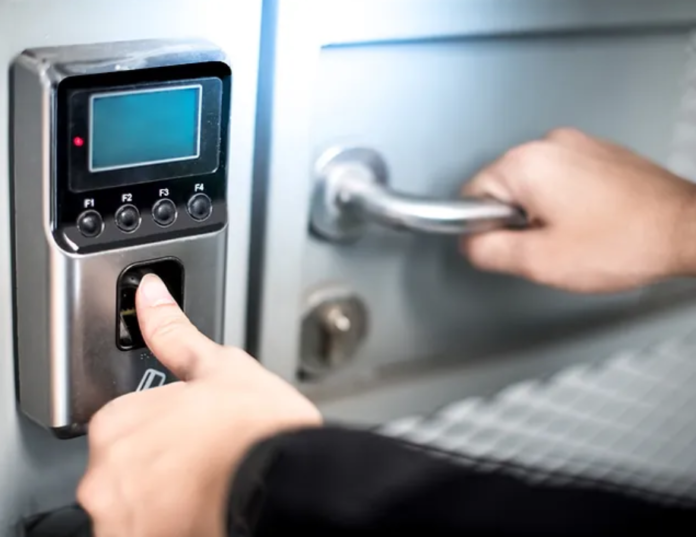In an age of uncertainty, where safety concerns loom large and peace of mind is increasingly sought after, the concept of panic rooms has gained significant traction. Originating as a feature of high-security installations, panic rooms have evolved into a viable option for residential properties, particularly in the UK. These fortified sanctuaries promise a refuge in times of crisis, offering protection against various threats ranging from home invasions to natural disasters. As the demand for heightened security solutions grows, it becomes imperative to explore the costs and effectiveness of panic rooms in the UK.
Understanding Panic Rooms
A panic room, also known as a safe room or a secure room, is a fortified space within a property designed to provide occupants with a secure retreat during emergencies. These rooms are typically equipped with reinforced doors, walls, and communication systems, along with provisions for food, water, and other essentials to sustain occupants for an extended period if necessary. Panic rooms are intended to offer protection against intruders, including burglars, home invaders, or even kidnappers, as well as natural disasters such as earthquakes or storms.
The Cost Factor
One of the primary considerations for installing a panic room is the associated cost. The expenses involved in constructing a panic room can vary significantly depending on several factors, including the size of the room, the level of security required, and the customization options chosen by the homeowner. In the UK, the cost of installing a panic room typically ranges from £10,000 to £100,000 or more, with high-end installations featuring advanced security features and luxury amenities commanding a premium price.
The cost breakdown of a panic room includes various components such as:
Structural Reinforcement: This involves fortifying the walls, floors, and ceilings of the designated room to withstand forced entry attempts. Reinforced steel or concrete is commonly used for this purpose, adding to the overall cost.
Security Doors and Locks: The entry point to the panic room is fortified with heavy-duty security doors equipped with robust locks and deadbolts. These doors are designed to resist tampering and provide a secure barrier against intruders.
Surveillance and Communication Systems: Advanced surveillance cameras, intercoms, and panic buttons are installed to enable real-time monitoring of the surrounding area and facilitate communication with external security personnel or emergency services.
Ventilation and Utilities: Adequate ventilation systems and access to essential utilities such as electricity, water, and sanitation are essential for ensuring the comfort and safety of occupants during an emergency.
Custom Features: Additional customizations such as bulletproof windows, reinforced glass, panic room décor, and emergency supplies can further contribute to the overall cost.
While the initial investment in a panic room may seem substantial, many homeowners view it as a worthwhile expenditure considering the invaluable protection and peace of mind it offers, especially in high-risk areas or for individuals with heightened security concerns.
Effectiveness and Peace of Mind
Beyond the financial aspect, the effectiveness of panic rooms in enhancing home security and ensuring personal safety is a paramount consideration for prospective buyers. The primary goal of a panic room is to provide a secure retreat where occupants can seek refuge and await assistance during a crisis situation. In this regard, panic rooms have demonstrated their effectiveness in numerous real-world scenarios, ranging from attempted break-ins to natural disasters.
Protection Against Home Invasions: In cases of attempted burglary or home invasion, a panic room serves as a fortified sanctuary where occupants can safely barricade themselves until help arrives. The reinforced construction and security measures deter intruders and buy valuable time for law enforcement or security personnel to respond.
Safe Haven During Natural Disasters: Beyond security threats, panic rooms also offer protection against natural disasters such as earthquakes, hurricanes, or tornadoes. The sturdy construction and structural reinforcement of the room minimize the risk of injury or harm from falling debris or structural damage, providing occupants with a safe haven until the danger passes.
Peace of Mind and Psychological Security: Perhaps equally important as its physical attributes is the psychological reassurance provided by a panic room. Knowing that a secure refuge is readily available instills a sense of confidence and peace of mind, allowing occupants to rest easier and go about their daily lives without constant fear or anxiety.
Investing in Security and Peace of Mind
Panic rooms represent a proactive approach to home security and personal safety, offering a fortified retreat in times of crisis. While the costs associated with installing a panic room may seem daunting, the benefits in terms of enhanced security, peace of mind, and potentially life-saving protection outweigh the financial considerations for many homeowners. In the UK, where concerns about safety and security are ever-present, the demand for panic rooms continues to rise as individuals seek to fortify their homes against potential threats. Whether as a precautionary measure or a response to specific security concerns, the effectiveness of panic rooms in safeguarding lives and property makes them a compelling option for those prioritizing safety and preparedness. As technology advances and security solutions evolve, the concept of panic rooms is likely to remain a cornerstone of residential security, providing a sanctuary of safety in an uncertain world.


